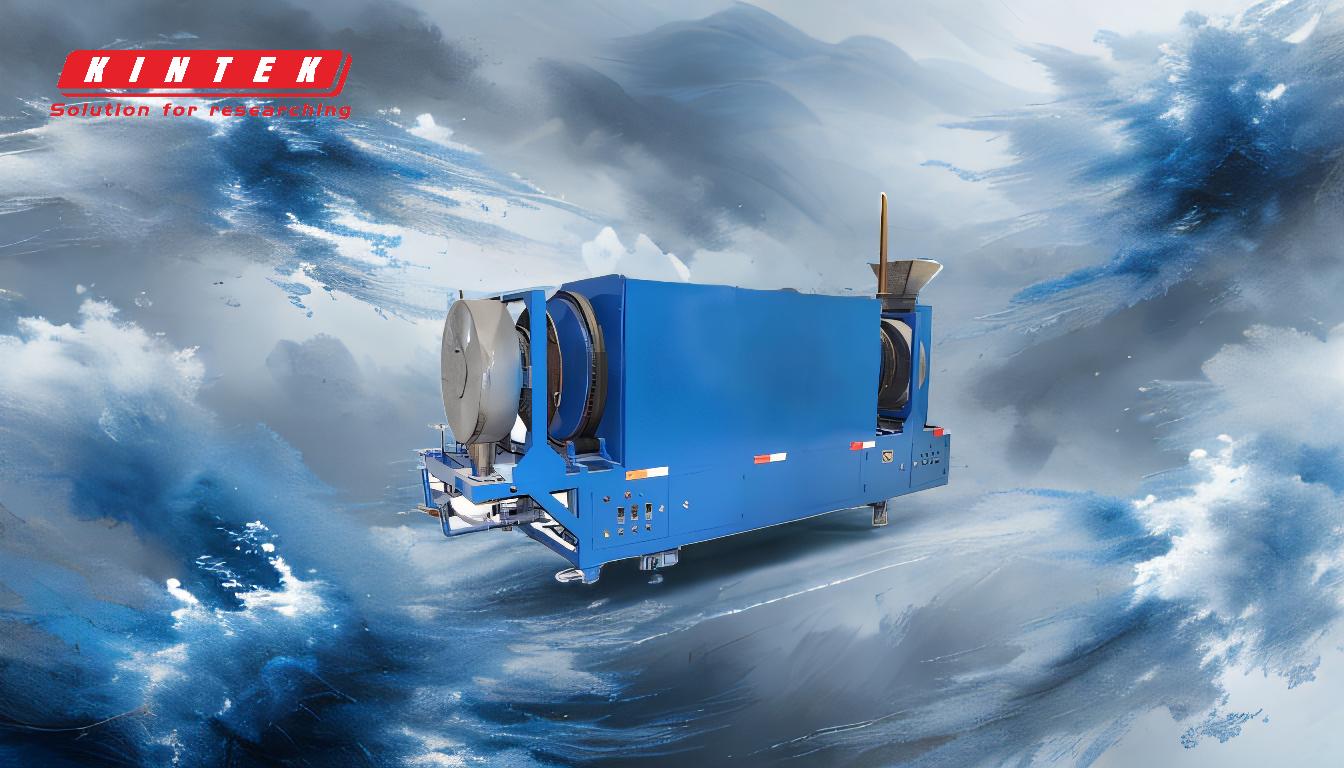Pyrolysis of tires is a complex thermal decomposition process that occurs in the absence of oxygen, leading to the breakdown of rubber into smaller molecules, gases, and solid residues. This process is influenced by several factors, including temperature, pressure, time, atmosphere, feed rate, and the physical and chemical properties of the tires. The primary cause of pyrolysis is the application of heat, which initiates the cracking of the rubber's main chain into monomers, biopolymers, and fragments. These then polymerize into various olefins, leaving behind solid carbon. The end products of tire pyrolysis include fuel oil, uncondensable gas, carbon black, and steel wire. The efficiency and composition of these products depend on the process conditions and the nature of the feedstock.
Key Points Explained:
-
Temperature:
- Temperature is the most critical factor in tire pyrolysis. As the temperature increases, the rubber undergoes a series of phase changes and chemical reactions.
- At around 100°C, small molecules in the tires begin to volatilize.
- At 140°C, the tires melt into a liquid state.
- Between 260°C and 280°C, the rubber's main chain starts to crack, leading to the formation of smaller molecules, which then polymerize into various olefins.
- Higher temperatures generally increase the production of non-condensable gases, while lower temperatures favor the production of high-quality solid products like carbon black.
-
Atmosphere:
- Pyrolysis requires an oxygen-free environment to prevent combustion and ensure the thermal decomposition of the rubber.
- The absence of oxygen allows the rubber to break down into smaller molecules without burning, leading to the formation of pyrolysis oil, gas, and solid residues.
-
Time (Residence Time):
- The duration of the pyrolysis process, known as residence time, affects the degree of thermal conversion and the composition of the end products.
- A longer residence time allows for more complete decomposition of the rubber, leading to higher yields of gas and oil.
- The typical pyrolysis process runs for 3-5 hours, but this can vary depending on the specific conditions and desired outcomes.
-
Feed Rate and Particle Size:
- The rate at which tires are fed into the reactor and the size of the tire particles can influence the efficiency of the pyrolysis process.
- Smaller particle sizes lead to quicker thermal decomposition and greater quantities of pyrolysis oil.
- Whole, halved, or shredded tires can be used, but shredded tires with most of the steel and fiber removed tend to yield more consistent results.
-
Pressure:
- While pressure is less critical than temperature, it can still influence the pyrolysis process.
- Higher pressures can increase the density of the gases produced, potentially affecting the condensation process and the yield of pyrolysis oil.
-
Nature of the Feedstock:
- The composition of the tires, including the presence of fibers and steel, can affect the pyrolysis process and the properties of the end products.
- Whole tires contain fibers and steel, which can complicate the process, while shredded tires with most of the steel and fiber removed tend to yield more consistent results.
-
End Products:
- The primary end products of tire pyrolysis are fuel oil, uncondensable gas, carbon black, and steel wire.
- Fuel oil can be used for heating, power generation, or hydrogen production.
- Uncondensable gas can be desulfurized and cleaned before being stored or used as fuel.
- Carbon black is a valuable solid residue that can be used in various industrial applications.
- Steel wire can be recovered and recycled.
In summary, the pyrolysis of tires is caused by the application of heat in an oxygen-free environment, leading to the thermal decomposition of rubber into smaller molecules, gases, and solid residues. The efficiency and composition of the end products are influenced by factors such as temperature, atmosphere, residence time, feed rate, particle size, pressure, and the nature of the feedstock. Understanding these factors is crucial for optimizing the pyrolysis process and maximizing the yield and quality of the end products.
Summary Table:
| Key Factor | Impact on Pyrolysis |
|---|---|
| Temperature | Higher temps increase gas production; lower temps favor solid products like carbon black. |
| Atmosphere | Oxygen-free environment prevents combustion, enabling thermal decomposition. |
| Residence Time | Longer times enhance gas and oil yields by allowing complete rubber decomposition. |
| Feed Rate/Size | Smaller particles and shredded tires improve efficiency and consistency. |
| Pressure | Higher pressures may affect gas density and oil yield. |
| Feedstock Nature | Shredded tires with steel/fiber removed yield more consistent results. |
| End Products | Fuel oil, uncondensable gas, carbon black, and steel wire are the primary outputs. |
Optimize your tire pyrolysis process today—contact our experts for tailored solutions!










